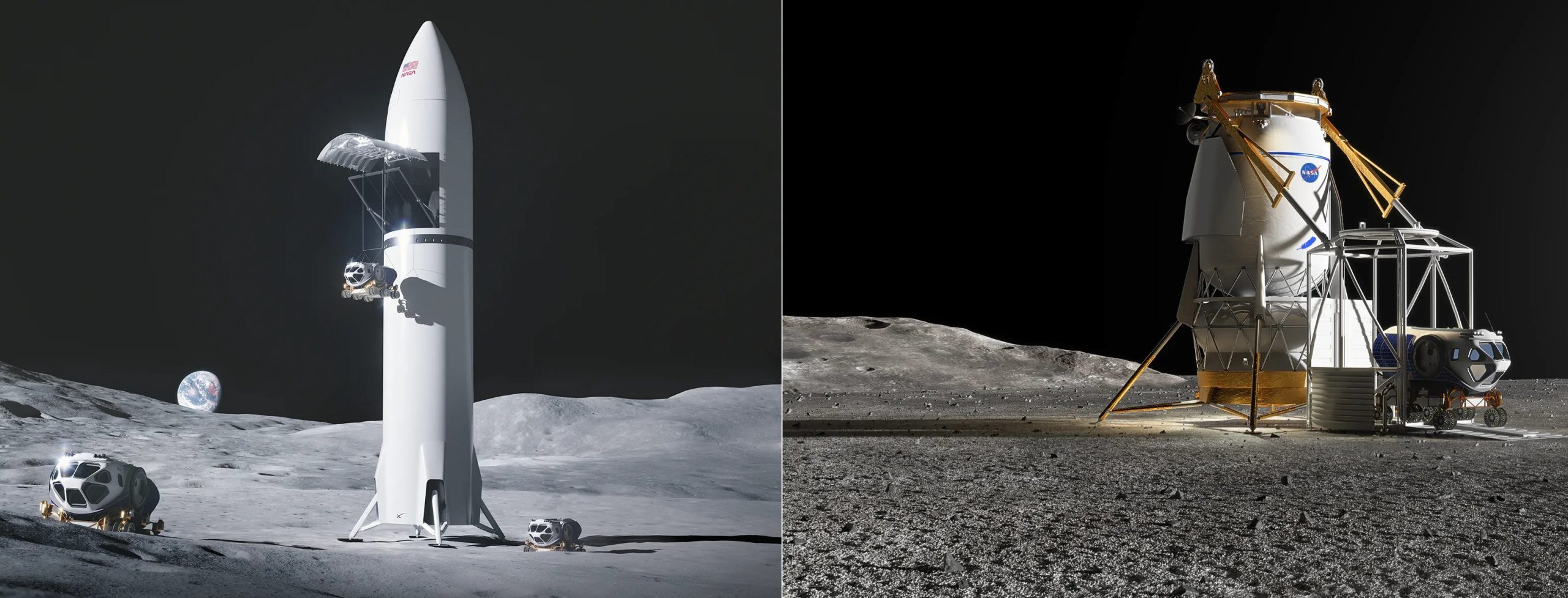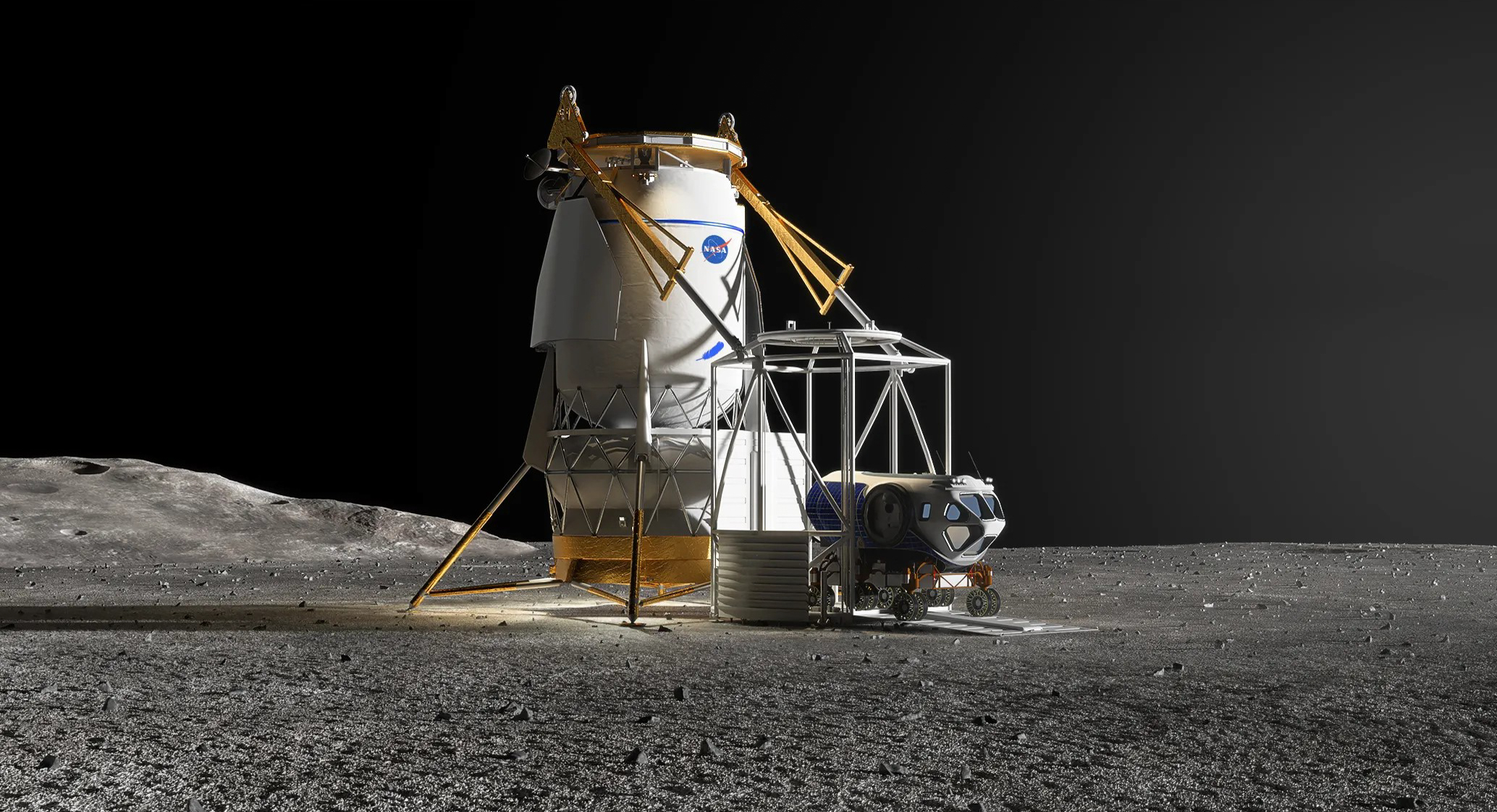26.04.2024

NASA shared updated renders of the SpaceX and Blue Origin cargo landers that will bring rovers and other equipment to the Moon.
In addition to landing humans, SpaceX and Blue Origin are providing cargo landers to carry next-generation Moon rovers and other equipment to the Moon under NASA’s Artemis program.
These cargo landers will be capable of delivering between 26,000 to 33,000 pounds to the Moon to support future astronauts and are planned to be ready in time for the Artemis VII mission, which is currently planned for no earlier than 2031.

A closer look at Blue Origin’s cargo lander (Credit Blue Origin)
NASA had decided to exercise an option in the existing contracts in November 2023 for the companies to begin the initial development phase. These cargo landers will not feature any life support systems.
The pressurized rover that will be delivered during this mission will be designed by the Japan Aerospace Exploration Agency after NASA and JAXA signed an agreement earlier this month. NASA will use either the Starship or Blue Origin cargo lander to deliver the vehicle to the Moon, and in exchange, NASA will fly two Japanese astronauts to the Moon on future missions.
This rover will be capable of supporting a crew of 2 for up to 30 days and is designed for a lifespan of up to 10 years. The vehicle will also be able to be controlled from the ground and conduct autonomous work in between crewed missions to the Moon.

A closer look at the SpaceX Starship cargo lander (Credit SpaceX)
NASA recently selected three other companies to compete to design an unpressurized Moon rover that is to be ready in time for the Artemis V mission. These rovers will be able to be delivered to the Moon with the Human Landing System, with the cargo variant being used for the much heavier pressurized rovers.
Do you think SpaceX and Blue Origin will be able to deliver these cargo landers by 2031, or will they face delays?
Quelle: TESLARATI
